As I dig deeper each day, it’s apparent that Make.com is a great automation tool. It allows you to include steps that use an AI prompting tool like ChatGPT, Perplexity, or other AI tools to provide data to your automation.
But what do you do when one of these AI tools goes offline or stops working? What if you have multiple ChatGPT modules and you want to update the models from ChatGPT 4 to 4o?
Making updates is easy if you’re using Make.com for your automation. But when your automation becomes more complex this can be a problem.
You might need to open up the automation and change the prompts individually. If you’re doing this in multiple places it takes a lot of time and it’s easy to make a mistake and break the automation.
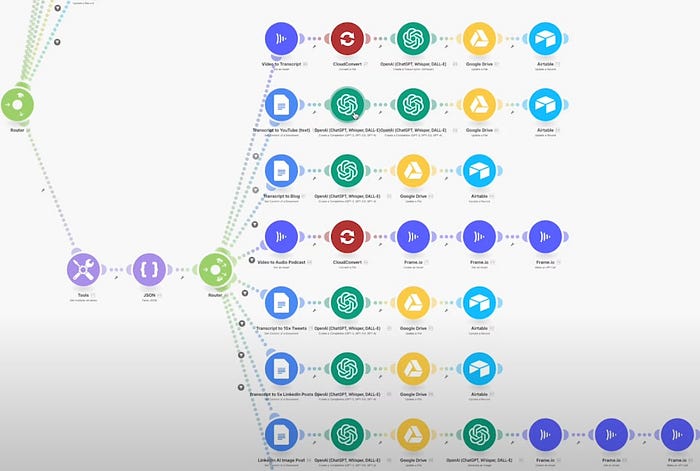
I’m going to show you how you can manage all of your AI prompts in one place, and simultaneously send a single AI prompt to multiple platforms like Perplexity, Claude, and ChatGPT.
Also, I’ll show you how you can use other AI prompting tools as a backup when your primary AI prompting tool goes down or offline.
You can download the full blueprint of this automation here: https://ko-fi.com/s/81ef81d58f
I hope you found this valuable. If you would like to learn more, discuss potential projects, or just connect, feel free to reach out to me on LinkedIn.
- Please clap and/or follow. It helps me out!
- Automate your content creation at the Content Academy.
- Thank you to Stephen Pope for the inspiration for this article.
Building the Automation
To demonstrate how to accomplish this, I’m going to show you an overview of how the API automation was built. I’ll then use a simple example by creating a Tweet Generation automation that uses the new API.
For this demo, the actual prompt inputs, model selection, and order will be managed using Airtable. But you could easily build a low-code application in Soft or Bubble to provide a more user-friendly method of entering your initial data.
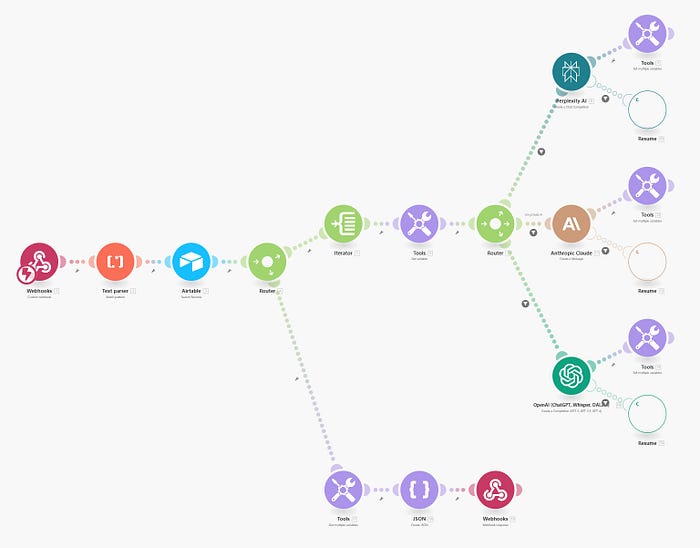
Developing the Custom API
API Structure
Above is the completed API automation. This automation takes the inputs from an Airtable Base (topic, system prompt, user, prompt, model to use, and generation method) and notifies a URL to trigger this flow.
This allows you to manage your AI tool prompts in one Airtable database.
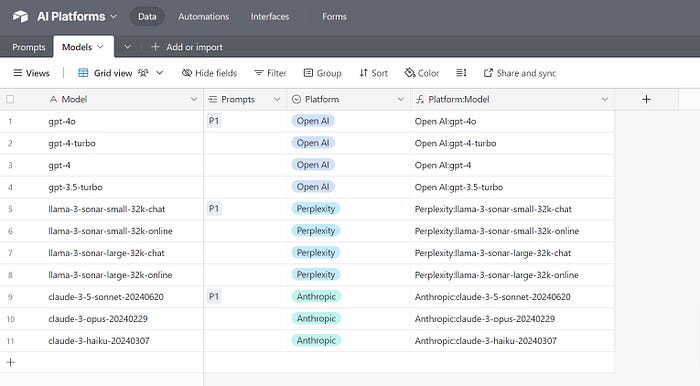
Two tables in our Airtable base manage the automation of the API. The “Models” tab allows you to set up the AI Prompt tools and models you want to make available.
Adding a new model or tool requires no updates to the API automation. The last field (“Platform:Model”) is the key field used by the automation to select the correct tool and model to use.
The model has multiple rows in case you want to generate data for multiple platforms. For this demo, we’re just going to use the first row to generate Tweets.
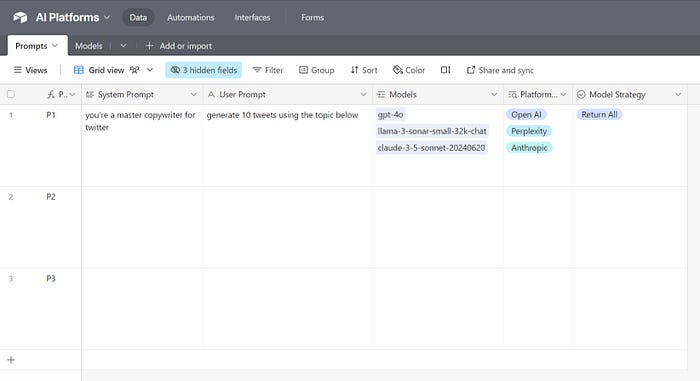
The “Prompts” tab is where you provide a System and User prompt for the AI prompt tool. You also select the AI tools and associated models from the tool you want to use.
After selecting your AI models, the last column is where you tell the API how you want your prompts output handled. If you want the results from all of the models you added, this should be set to “Return All”. This will generate output from all models and send back the response received for all of the AI tools you selected.
For this demo, we’re going to set this value to “First Success”. The automation will try the first AI prompting tool in your list. If it is a success, the automation will return a result without needing to check the other AI prompting tools.
So, from the image above, if OpenAI ChatGPT-4o is offline, the automation will automatically try the Perplexity model. If that produces a result, the automation will stop and send the response without continuing to the next AI tool.
The API Automation Flow
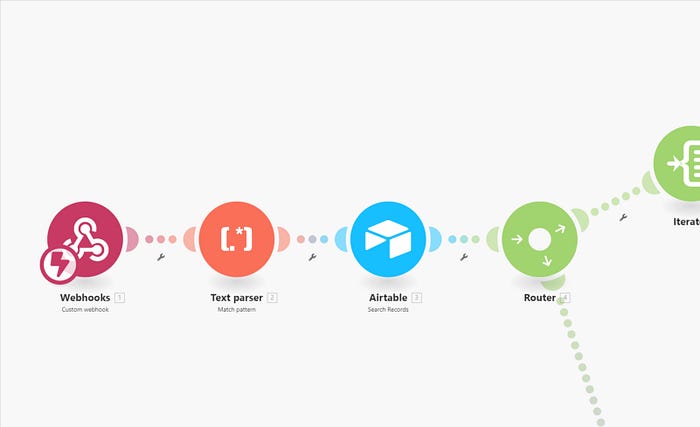
This is the beginning of the API flow. We set up a Webhook to call this automation and send the “prompt” information to the text parser. We pull the correct parts out of Airtable for the System and User prompts for processing later.
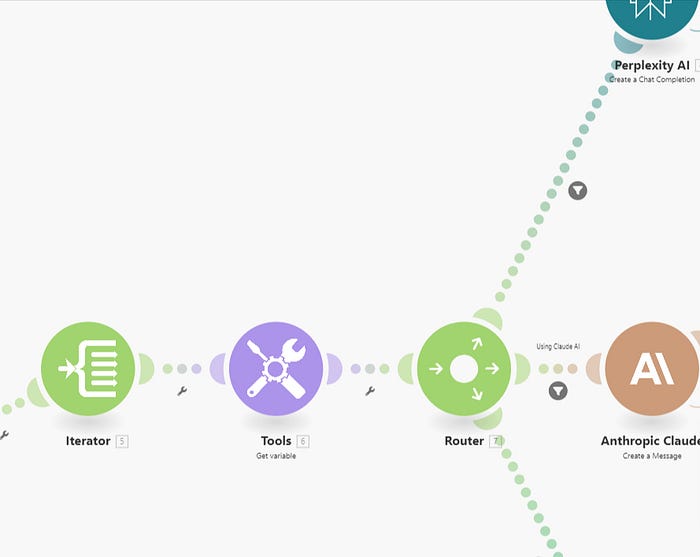
The flow now iterates through the tools and models that were assigned to the prompt and gets them ready to pass through the router to each AI tool in the order specified.

The data passes through a filter so that only the data (model to use) associated with this tool is passed. The model then processes the prompts. If a valid output is provided, it goes to the Tools module and sets the result. Otherwise, if the result is not a success, the error handler kicks in, sets a proper result, and moves on to try the next AI prompt tool.
I have set the “Model Strategy” (Airtable) to “First Success”. The automation will generate my request with OpenAI, ChatGPT-4 first. If ChatGPT-4 is down or fails, the automation will try Perplexity, and so on.

This is the key part of the automation to ensure redundancy in your automation. If you wish to add other AI tools, like Google’s Gemini, you could easily add them.
Once the AI tool has generated your tweets, the result is prepared for returning to your originating automation.

The automation continues after processing all filters for the AI tools and builds the JSON response from the results. This response is returned by the API.
Testing and Validating the Automation
To test the API, I set up a simple automation to generate tweets.
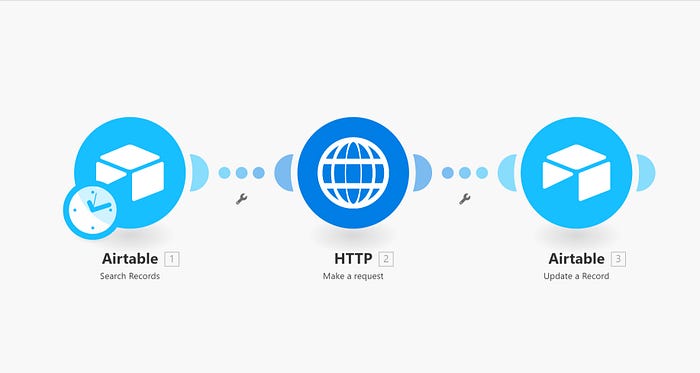
The first thing to note is that instead of using a ChatGPT, Perplexity, or other AI tool module, I am using the HTTP — Make a Request module. This will call my AI Prompt Tool API automation and pass in the prompt from the Airtable database below.
This is a simple Airtable sheet to manage the inputs and outputs for the demo.
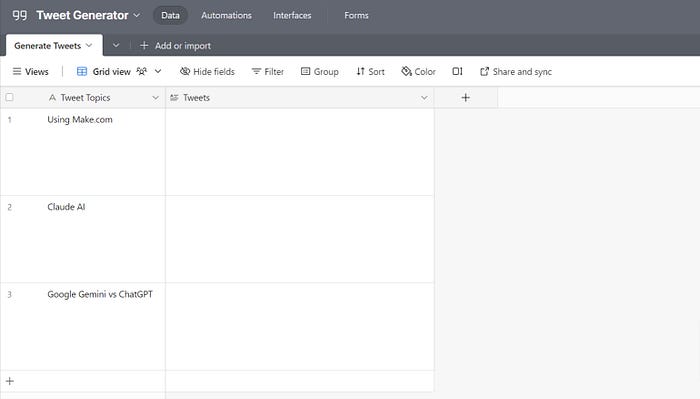
The Tweet Generator will take the Tweet Topic and pass it to the AI Tool API. The results from the API will be displayed in the Tweets field.
In my API Airtable base, I am going to change the user prompt to “generate 3 tweets using the topic below” and I will set the Model Strategy to “First Success”.
Here are the results of the test:
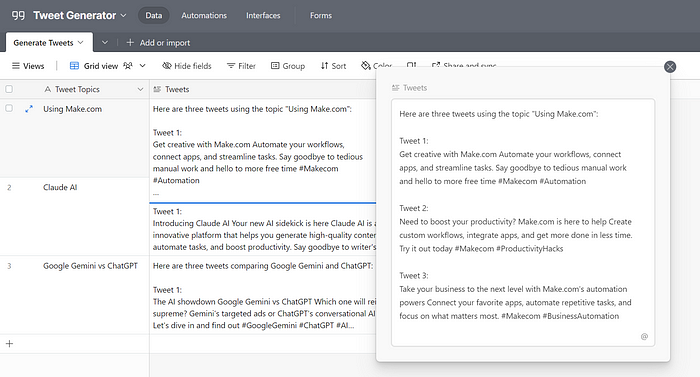


Conclusion
The greatest benefit to this is that when ChatGPT goes down again, I don't need to go into my automation and switch out the AI tool I am using. This AI Tool API does it for me.
I can also control the exact model I want to use from a single location: my Airtable database.
Additional Resources
You can download the full blueprint of this automation here: https://ko-fi.com/s/81ef81d58f
I hope you found this valuable. If you would like to learn more, discuss potential projects, or just connect, feel free to reach out to me on LinkedIn.
- Please clap and/or follow. It helps me out!
- Automate your content creation at the Content Academy.
- Thank you to Stephen Pope for the inspiration for this article
